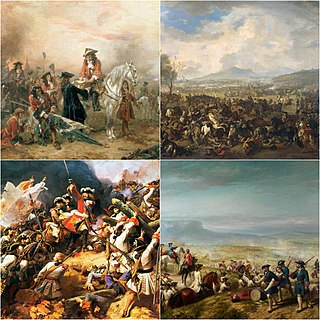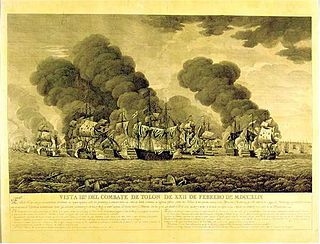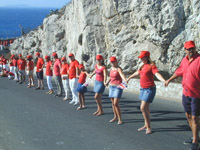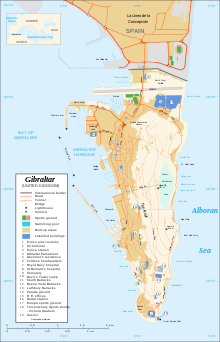
The War of the Spanish Succession was a European great power conflict that took place from 1701 to 1715. The death of childless Charles II of Spain in November 1700 led to a struggle for control of the Spanish Empire between his heirs, Philip of Anjou and Charles of Austria, and their respective supporters, among them Spain, Austria, France, the Dutch Republic, Savoy and Great Britain. Related conflicts include the 1700–1721 Great Northern War, Rákóczi's War of Independence in Hungary, the Camisards revolt in southern France, Queen Anne's War in North America and minor trade wars in India and South America.

Hegemony is the political, economic, and military predominance of one state over other states. Hegemony can be regional or global.

Sociology of sport, alternately referred to as sports sociology, is a sub-discipline of sociology which focuses on sports as social phenomena. It is an area of study concerned with the relationship between sociology and sports, and also various socio-cultural structures, patterns, and organizations or groups involved with sport. This area of study discusses the positive impact sports have on individual people and society as a whole economically, financially, and socially. Sociology of sport attempts to view the actions and behavior of sports teams and their players through the eyes of a sociologist.

The Battle of Toulon, also known as the Battle of Cape Sicié, took place between 21 and 22 February 1744 NS near the French Mediterranean port of Toulon. Although France was not yet at war with Great Britain, ships from their Levant Fleet sailed out with a Spanish force, which had been trapped in Toulon for two years, to break the blockade imposed by the British Mediterranean Fleet.

The British Mediterranean Fleet, also known as the Mediterranean Station, was a formation of the Royal Navy. The Fleet was one of the most prestigious commands in the navy for the majority of its history, defending the vital sea link between the United Kingdom and the majority of the British Empire in the Eastern Hemisphere. The first Commander-in-Chief for the Mediterranean Fleet was the appointment of General at Sea Robert Blake in September 1654. The Fleet was in existence until 1967.

The battle of Málaga, also known as the battle of Vélez-Málaga, was a major fleet action which took place during the War of the Spanish Succession between an Anglo-Dutch fleet and a French naval force on 24 August 1704. Both sides fought an intense engagement before the Anglo-Dutch fleet withdrew the next day. The French subsequently returned to Toulon, transforming the battle from a tactical stalemate into a strategic defeat, as they would not put out to sea again for the duration of the conflict. Occurring soon after the Anglo-Dutch capture of Gibraltar a few weeks prior, the battle served as one of the numerous engagements which took place for control over the settlement during the war.

Edward Backwell was an English goldsmith-banker, and politician who sat in the House of Commons at various times between 1673 and 1683. He has been called "the principal founder of the banking system in England", and "far and away the best documented banker of his time".

Edward the Elder was King of the Anglo-Saxons from 899 until his death in 924. He was the elder son of Alfred the Great and his wife Ealhswith. When Edward succeeded to the throne, he had to defeat a challenge from his cousin Æthelwold, who had a strong claim to the throne as the son of Alfred's elder brother and predecessor, Æthelred I.

The military history of Gibraltar during World War II exemplifies Gibraltar's position as a British fortress since the early 18th century and as a vital factor in British military strategy, both as a foothold on the continent of Europe, and as a bastion of British sea power. During World War II, Gibraltar served a vital role in both the Atlantic Theatre and the Mediterranean Theatre, controlling virtually all naval traffic into and out of the Mediterranean Sea from the Atlantic Ocean.

Gibraltarians are an ethnic group native to Gibraltar, a British overseas territory located near the southernmost tip of the Iberian Peninsula at the entrance to the Mediterranean Sea.

The Capture of Gibraltar by Anglo-Dutch forces of the Grand Alliance occurred between 1 and 4 August 1704 during the War of the Spanish Succession. Since the beginning of the war the Alliance had been looking for a harbour in the Iberian Peninsula to control the Strait of Gibraltar and facilitate naval operations against the French fleet in the western Mediterranean Sea. An attempt to seize Cádiz had ended in failure in September 1702, but following the Alliance fleet's successful raid in Vigo Bay in October that year, the combined fleets of the 'Maritime Powers', the Netherlands and England, had emerged as the dominant naval force in the region. This strength helped persuade King Peter II of Portugal to sever his alliance with France and Bourbon-controlled Spain, and ally himself with the Grand Alliance in 1703 as the Alliance fleets could campaign in the Mediterranean using access to the port of Lisbon and conduct operations in support of the Austrian Habsburg candidate to the Spanish throne, the Archduke Charles, known to his supporters as Charles III of Spain.

Thomas James Finlayson MBE, commonly known as Tommy Finlayson, is a Gibraltarian historian. He is also a former cricketer and archivist of the Gibraltar Archives.

The history of Gibraltar, a small peninsula on the southern Iberian coast near the entrance of the Mediterranean Sea, spans over 2,900 years. The peninsula has evolved from a place of reverence in ancient times into "one of the most densely fortified and fought-over places in Europe", as one historian has put it. Gibraltar's location has given it an outsized significance in the history of Europe and its fortified town, established in the Middle Ages, has hosted garrisons that sustained numerous sieges and battles over the centuries.

Grand Casemates Gates, formerly Waterport Gate, provide an entrance from the northwest to the old, fortified portion of the city of the British Overseas Territory of Gibraltar, at Grand Casemates Square.

Hillforts in Scotland are earthworks, sometimes with wooden or stone enclosures, built on higher ground, which usually include a significant settlement, built within the modern boundaries of Scotland. They were first studied in the eighteenth century and the first serious field research was undertaken in the nineteenth century. In the twentieth century there were large numbers of archaeological investigations of specific sites, with an emphasis on establishing a chronology of the forts. Forts have been classified by type and their military and ritual functions have been debated.

Windmill Hill or Windmill Hill Flats is one of a pair of plateaux, known collectively as the Southern Plateaux, at the southern end of the British Overseas Territory of Gibraltar. It is located just to the south of the Rock of Gibraltar, which descends steeply to the plateau. Windmill Hill slopes down gently to the south with a height varying from 120 metres (390 ft) at the north end to 90 metres (300 ft) at the south end. It covers an area of about 19 hectares, though about 6 hectares at the north end is built over. The plateau is ringed to the south and east with a line of cliffs which descend to the second of the Southern Plateaux, Europa Flats, which is itself ringed by sea cliffs. Both plateaux are the product of marine erosion during the Quaternary period and subsequent tectonic uplift. Windmill Hill was originally on the shoreline and its cliffs were cut by the action of waves, before the ground was uplifted and the shoreline moved further out to the edge of what is now Europa Flats.

The siege of Grave, also known as the capture of Grave of 1586, took place from mid-February to 7 June 1586 at Grave, Duchy of Brabant, Low Countries, between the Spanish army led by Governor-General Don Alexander Farnese, Prince of Parma, and the Dutch-States and English forces under Baron Peter van Hemart, Governor of Grave, during the Eighty Years' War and the Anglo-Spanish War (1585–1604).

The Capture of Valkenburg of 1574, took place in early February 1574, at Valkenburg, South Holland, during the Eighty Years' War and the Anglo-Spanish War (1585–1604), in the context of the siege of Leiden. The fortress of Valkenburg, garrisoned by five English companies commanded by Colonel Edward Chester, was of strategic importance to facilitate the Spanish efforts at Leiden. In early February, when the Spanish troops advanced over Valkenburg Castle, the English troops surrendered the fortress to the Spaniards and fled towards Leiden. Then, the Spanish forces entered and took possession of the fortress. For the cowardice demonstrated at Valkenburg, the English troops were rejected by the Dutch rebel army at Leiden, and finally Chester's troops surrendered to the Spanish army.


















